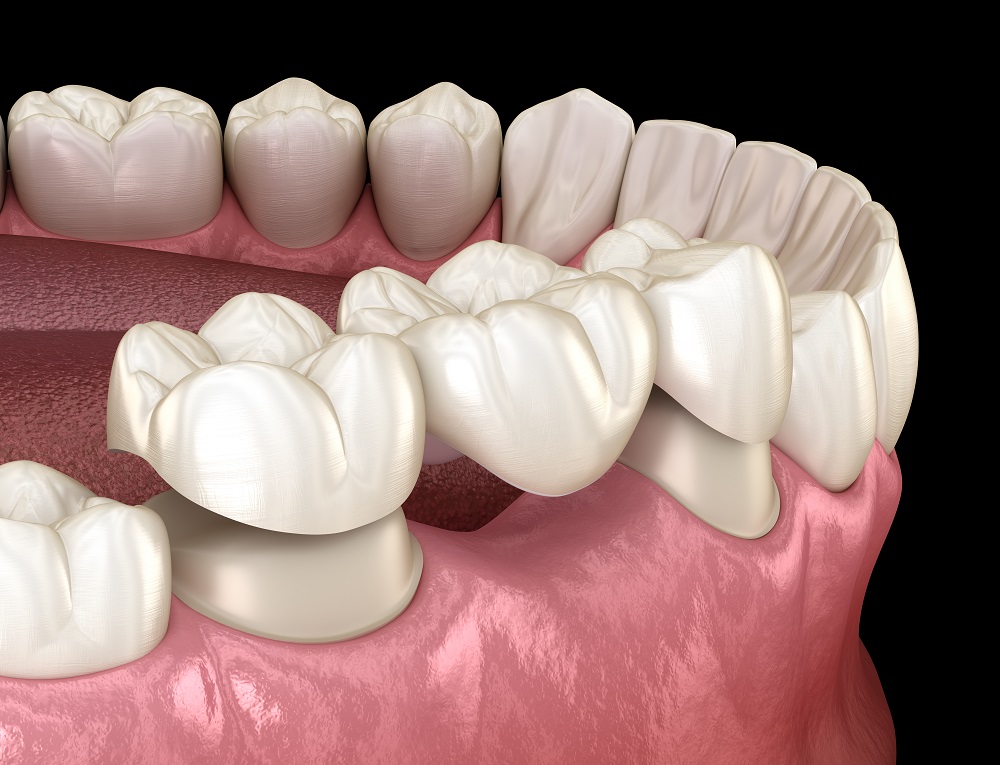
About Dental Bridges
A dental bridge is a fixed (non removable) restoration used to replace a missing tooth or several teeth by anchoring/attaching artificial crown/crowns to remaining natural teeth or dental implants. It stays permanently in your mouth. Dental bridges consist of two layers. They have a framework made out of metal, most of the time, especially when it is long and/or incorporates multiple supporting teeth overlayed with porcelain.
Advantages
- Prevents remaining teeth from drifting
- Fill the space of the missing tooth
- If remaining teeth have a large fillings, decay or broken down then by crowning these teeth as part of the bridge we are actually helping to preserve them and replace your missing tooth at the same time.
- Data has shown that fixed bridgework is very predictable, durable and lasts a considerable length of time.
- Less invasive than implants.
Disadvantages
- The preparation is quite invasive. In order to receive a crown as the part of the bridge the teeth must be filed down. If the tooth has no fillings or a small filling it may be quite a concern for some people. The notion that absolutely normal tooth must be ground down is not acceptable by everybody. Also there is a possibility of a nerve damage that will require root canal treatment.
- If one of the supporting teeth decays out, fractures, you will need to remove and redo entire bridge most of the time which can be very costly.
- May get quite expansive, especially if it is more than 3 unit restoration.
- Flossing becomes more challenging and requires special auxiliary like super floss or bridge threader.
The process of making and receiving a dental bridge
Making a bridge usually requires 3 sessions
- Teeth that will support a bridge are anesthetized, if necessary, and prepared to accept a new restoration. An impression is taken to capture prepared teeth. The temporary bridge is fabricated to protect teeth and prevent them from any movement. The case, then, send to the lab for a bridge framework fabrication.
- At the second appointment involved teeth are anesthetized again, if necessary. The temporary bridge removed and metal/zirconia framework is tried in and fit verified. If it passes our rigorous inspection the framework will be send back to the lab to add a porcelain layer.
- Session three is bridge delivery. Once again, if necessary teeth are anesthetized, finished restoration tried in. Fit and bite verified and bridge cemented on permanent cement if both, patient and a doctor, are satisfied.
If you have questions about dental bridges or are ready to schedule an appointment, contact us at (215) 557-0660.